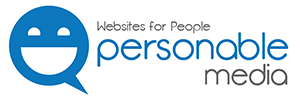By now, most people know the value of SEO (search engine optimization). It drives traffic to their website. They understand the big picture, that if they don’t invest money in this way, add great content, monetize products and market aggressively, they likely won’t profit online.

Let’s assume you do everything right, and you generate a ton of traffic. But not a lot of sales. How can this be? Because low traffic and low sales are two different problems. Let’s focus on the low sales dilemma.
The good news is, this problem may be easy to fix. It may be that your website is confusing the customer. Specifically, you may be presenting them with too many choices.
There are several studies about how too many choices can cause paralysis in decision-making and overall dissatisfaction. It’s easier to be unhappy when you imagine you could have made a better choice. This, according to the author of The Choice Paradox. In fact, having too many selections can inhibit people from choosing anything. This explains how high traffic sites can produce poor sales. Here are my top three reasons less is more when designing your website!
1. You Can Measure Your Progress
 Long before the Internet was invented, one of the greatest football coaches Vince Lombardi made this observation: “It’s hard to be aggressive when you’re confused.” It’s also hard for customers to buy when they’re confused!
Long before the Internet was invented, one of the greatest football coaches Vince Lombardi made this observation: “It’s hard to be aggressive when you’re confused.” It’s also hard for customers to buy when they’re confused!
Coach Lombardi famously ran one play over and over again in every practice. Holding a stopwatch, he could quantify how much focus, how much improvement on speed his players were making. He knew when their effort was excellent and when they were either exhausted or slacking. When you make a change to your website, you must be able to quantify the increase in sales.
Don’t make multiple changes that might confuse your customers next time they log in. Be like Coach Lombardi & know what’s working and what’s not, and be relentless in measuring your progress.
2. You Avoid Trapping Your Customer
Know your market. Target and capture your customers for repeat business.
You don’t want your website to perform like an online dating site do you? If you’re not careful, your website could fall into two traps:
Trap #1: Reading hundreds of profiles of strangers instead of meeting one or two people that you enjoy getting to know. Is your website so crowded with data that your customer feels lost and invisible? The interface between your customer and your website should be so seamless, so intuitive that the customer’s experience should resemble a walk in nature, the joy of what they’re seeing and learning becomes foremost on their mind. Remember, it is technology that should be invisible not your customer!
Trap #2: Going on so many dates per week you dread the process! If you’re not careful, your website can turn people into a commodity like chords of firewood that need to be stacked. To avoid making your customer feel that way reduce the number of choices they have when they land on your website. Any good car salesperson will find out what you’re looking for, and only give you three options. Otherwise, customers become overwhelmed and no sale is had.
3. You Give Your Customer What They Want

According to Professor Sheena Iyengar of Columbia Business School, fewer choices increase sales. For example, customers buy more jam when they are offered six choices instead of twenty-four.
In her TED talk about the art of choosing, Professor Iyengar explains that for many cultures more choice inspires fear not freedom. Be kind to your customers by reducing their options. In Eastern Europe, for example, some have such an aversion to excessive options that when she offered them seven different sodas, they perceived it as one choice: soda or no soda. When she offered many sodas, juices and water, they perceived it as only three choices. Many customers have a deep need for simplicity.
Further, she found that if people are offered more than ten choices, they make poorer decisions. For example, participation in 401K investments goes down in proportion to how many options employees are offered. When they are offered too many choices, they postpone their decision, and end up not investing at all.
Lastly…
Keep this in mind, your website may already offer more choices than what people want or need. So why not make them happy by reducing the number of choices they have, and maximize your profits at the same time? Hit us up in the comment section, or if you are ready to start building-out your new website experience today head over to our contact page.







[…] people know that a truly effective web design means that you can have fewer features and designs on a page and it will still be as effective if not more effective than one that’s jam-packed with […]